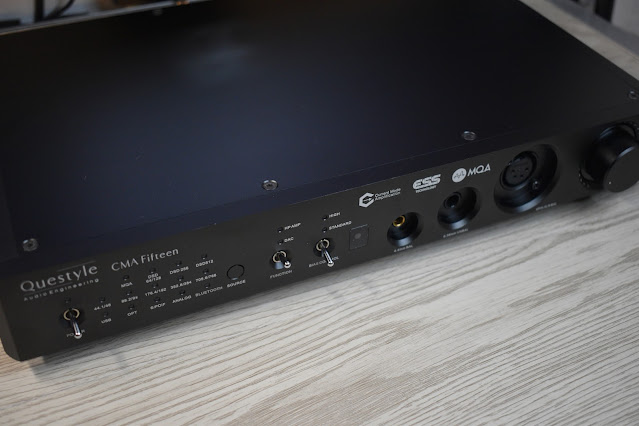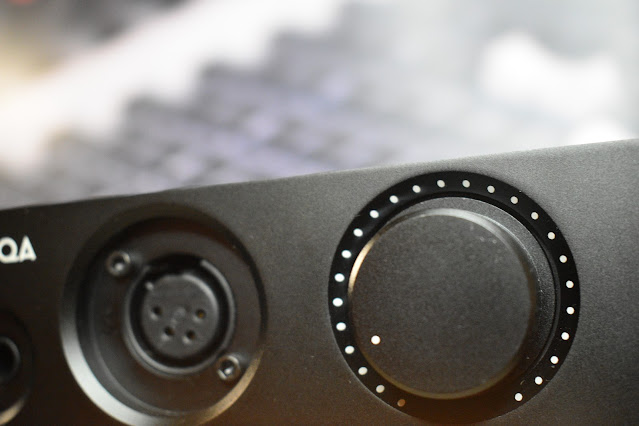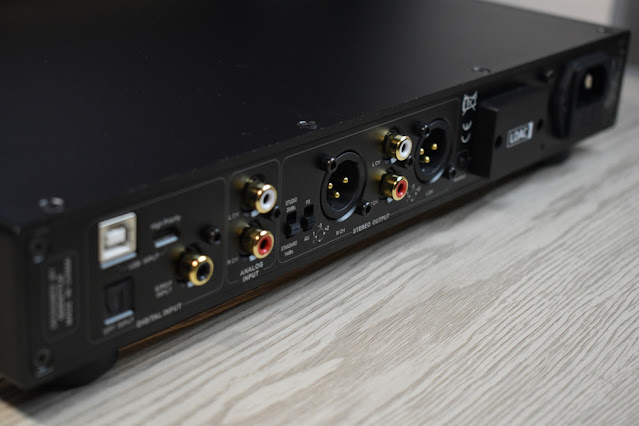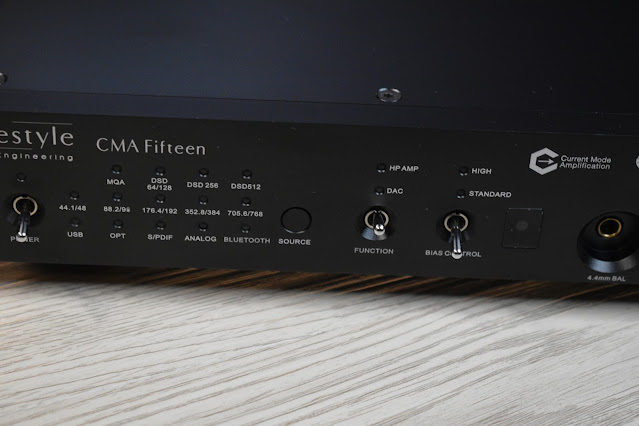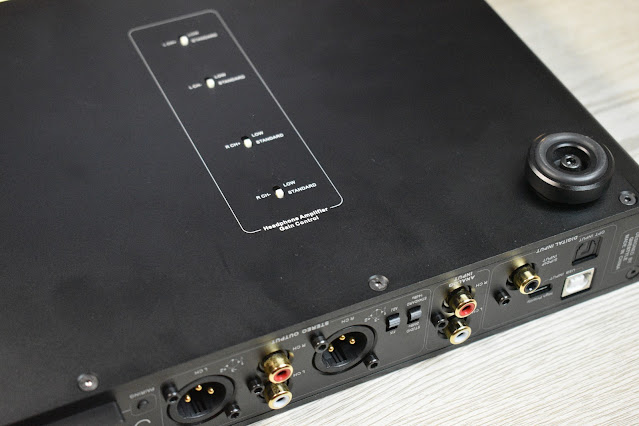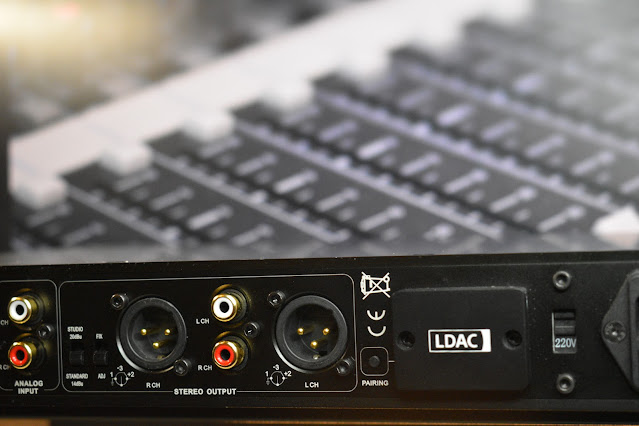I am putting this here as a search didn’t bring back any relevant threads for the CMA15. If there is a more suited thread, please move this to the relevant place. Thanks.
The Questyle CMA Fifteen has been loaned to me directly by Questyle as part of a European tour of the unit organised on Head-Fi. The only request was that I leave an honest review on Head-Fi, after having the chance to try the unit for 2 weeks.
They have not made any further requests but I will leave the link to the official Questyle page for the product, as it is the least I can do.
The official page is located here: https://questyleshop.com/collections/desktop-dac-map/products/cma15
Intro…
This is my first experience with a Questyle product but I have heard very good things about their products in the past. They focus mainly on DAC/Amp combo units, both desktop and mobile, with products ranging from just over 100€, in the case of their cheapest portable solution, up to the top of the line, which happens to be the CMA15 I have today, that comes in at around 2300€ (at the time of creating this review).
Now, 2300€ can in no way be considered cheap, at least in my books, but it is true that there are many other options out there that cost a lot more, so what exactly are Questyle giving us in exchange for this amount?
Well, I will get into details as we move on, but straight of the bat they are using an ESS ES9038PRO DAC chip, along with an amplification circuit that can pump out up to 2W @32 Ohms (in balanced mode), along with a huge range of connection possibilities, both for inputs and outputs. So, let’s take a look step by step.
Presentation…
As this is part of a tour, the packaging has not arrived in the best of conditions, however, the unit is well protected inside two boxes and even though it has travelled thousands of kilometres already, the packaging is still holding up, therefore, I have no doubt that the packaging is more than enough for new units being shipped directly to the purchaser.
Inside the box we receive the CMA15 itself (inside a cloth bag to protect it even more), a remote control, a user manual, a cd with the USB drivers (which I haven’t needed on Windows 10) and an IEC lead.
There is nothing really exciting about the contents (other than the unit of course) and it actually reminds me of the way the majority of pro audio equipment is packed, basic but enough. Maybe they could have included a USB cable in order for it to be usable straight from the box but, to be honest, anyone purchasing a product of this price will already know what cables they are going to need since they will have researched the product before buying. Well, at least I hope they will have researched a >2k product before buying, if they can afford to purchase a >2k DAC/Amp without any research, then they shouldn’t have any issue spending a bit more on cables ![]()
Build and aesthetics…
Let me say that the build quality of the CMA15 is excellent, it is well assembled, made of metal, and seems like it will be able to withstand anything you want to put it through.
As far as aesthetics, this isn’t going to be for everyone. The “pro audio gear” reference I made in regards to packaging also applies to the aesthetics. The looks (and build) are very much a “no frills, just works” approach. It does remind me of many pro audio units that I have used and installed in the past, units that are not meant to look like a centre of attention, they are just meant to sit in their allocated space and do their job.
The whole case is of black metal, with visible hex screws on the top of the unit and a machined faceplate on the front, sporting multiple LEDs and toggle switches. There is also a lot of text on the front, including some oversized (in my opinion) logos, which add to the industrial look.
Personally, I am someone who has a 22U rack in my living room and have been surrounded by pro (industrial looking) equipment for many many years, and while I do appreciate good looking equipment, I have absolutely no complaints about the looks and build of the CMA15. It is right at home located between patch panels and processors.
Functionality…
There is a lot of functionality included in the CMA15 but once more it takes on the pro/industrial theme. Things are simple to use and to access, there are no menus, screens, or any other hidden settings (except for the gain switches that are on the bottom, which I guess could be considered hidden), it just keeps up the “no frills” way of getting it done.
Starting on the front, from left to right, we have:
On/Off toggle switch - Pretty self explanatory and it has an LED above it to show status.
14x indicator LEDs - Yes, 14! There is an indicator LED for each state, the only one that changes colour is the MQA light, which changes depending on if it is a Studio Master or not. If you are wondering why there are 14 LEDs, it is easier if you just take a look at the photo above rather than me listing them all.
Source button - This push button allows you to cycle through the inputs, which are USB/Optical/SPDIF/Analog & Bluetooth (each of these is indicated by its own LED (part of the 14 mentioned above).
Function switch - This allows us to select Headphone Amp or DAC mode. By setting it to the HP AMP, the unit works as both a DAC and a headphone amp, while selecting DAC mode deactivates the headphone outputs. We get another 2 LEDs above this switch to indicate state.
Bias Control - I must say that I have no idea what this switch does. The switch allows selection of High or Standard. I played around with them and while I sometimes felt it made a difference, other times I could tell absolutely no difference. Another 2 LEDs show the state of this switch.
4.4mm Balanced output - This is pretty explanatory also I believe, here is where your headphones with a balanced 4.4 connection get plugged in.
6.35mm Unbalanced output - Same as above but for the unbalanced output.
XLR4 Balanced output - Another balanced output, using a 4 pin XLR in this case.
Volume wheel - A nice large and smooth volume control.
Moving around to the back of the unit, once more from left to right, we get:
USB Inputs - The unit has both a USB-B and a USB-C input, although both of these are linked together, so only use one or the other.
Optical input - For optical cables.
S/PDIF Input - For coaxial cables.
Analog input - An unbalanced input on two RCA’s.
Preamp Output mode switch - This allows you to toggle between “Studio” and “Standard”, the difference being the maximum output level (14dBu for Standard and 20dBu for Studio).
Preamp/Fixed mode switch - This allows you to select if you want the volume control of the CMA15 to control the output level from the analog outs or if you want them at a fixed level.
XLR Outputs - Balanced analog outputs
RCA Outputs - Unbalanced analog outputs
Bluetooth pairing button - To enter pairing mode
Bluetooth antenna - This is actually a square box and does not have anything sticking up above the top of the unit (a good thing in my opinion). I can’t say how much this affects reception, if at all, as I only tried bluetooth briefly while the unit was sitting on my desk.
Voltage switch - Set to 220v or 110v depending on your location.
IEC input - The power input for the unit.
Finally, on the bottom of the unit, we have the gain switches for the headphone amplification output. For some reason there are 4 switches that all need to be set in order for the gain to change, these are labelled as L+ L- R+ and R-. I am guessing that it is due the way the amplifier is implemented but I really haven’t done much investigation on the subject. I just found it strange that they wouldn’t opt for a single switch that activates a relay that can change all four of them at once, but I am far from an expert, so I’m sure they have their reasons.
That is it for the unit itself, however, we still have the remote control that is included with the unit.
The remote is actually a universal remote that works with other Questyle products, so there are quite a few functions on the remote that don’t actually do anything on the CMA15. The basics are there, like input select and volume up/down, but that is about it. To be honest, my headphone related equipment is nearly always within arms reach anyway, so I don’t use a remote very often, and when I do, input select and volume is enough functionality for me anyway.
As far as how all of this works, well, there isn’t really much to explain. You connect the cables you want, the headphones you want, you turn it on, select the input, and away you go. The most complicated thing is probably connecting to bluetooth for the first time as you would need to press the pairing button on the back, but even that is too simple to need an explanation.
My use case…
Usually when testing a DAC, Amp or combo, I will use it on my desk at work for a few days and then move it to my desk at home where I have the possibility of patching it into the rest of my system.
In the case of the CMA15, I also used it on my desk at work for a week or so and then I moved it home but, instead of just sitting it on my home desk, I actually installed it inside the rack to get a feel for what it would be like to have this as my only headphone amp and DAC in my system. Well, not quite only DAC, as I still need other units for my various speaker set ups etc. but certainly as my main DAC, the one that is used for all of my local listening.
My only complaint with the unit as far as an all-in-one for desktop use would be the fact that you need to lift up the unit to access the gain switches. As someone who uses different products each week, due to reviewing items, I switch between IEMs and headphones quite a lot, and also between items that have very different sensibilities. This means that I need to switch the gain depending on what I am testing but this is more of an inconvenience than anything else.
The CMA15 has more than enough power for anything that I have thrown at it this week (admittedly I don’t have any headphones that are extremely difficult to drive, such as a Susvara or HE-6), and it also works well for controlling the speakers that I have set up in my office, using the balanced output to drive a QSC amplifier (that powers my ceiling speakers and subwoofers) and the unbalanced output to feed a JDS Labs Atom (an amplifier that I always use as a reference point).
When moving it to my home set up, with it installed in the rack, things are a little more complicated. Here the gain switches are even more difficult to access, as it is impossible to change them without removing the unit from my rack (which is not the most enjoyable of tasks), but I don’t need to change them as much at home due to having multiple setups that I can use depending on the headphones or IEMs (although, if this were to be my only DAC/Amp unit, it would be more of an issue).
My biggest issue with using this as my only unit at home is the lack of a balanced input. While I am happy to feed the CMA15 with a digital input for music listening, when I am actually working with music or playing bass etc., my main output is via balanced XLRs. This means that I need to either run something like an RDL converter to turn these into an unbalanced RCA signal, or come up with some other form of “making do” with the CMA15.
Obviously this is not something that will affect the vast majority of users looking at this unit, as they will be using this for music enjoyment and not music production, but it is something that affects me personally and would stop me from saying this is a perfect studio option.
Other than that, I have no complaints as far as functionality, the unit does everything I need and want, keeping up with the “no frills” way of doing it.
Sound…
As I have said in the past, I really don’t like trying to explain the sound of amplifiers and DACs, as I am never sure what I am actually hearing and what I just think I am hearing, but at the end of the day, as long as my brain enjoys what I am hearing (true or not), that is the only thing that is important for me.
I have tried the majority of headphones that I currently have available, along with a selection of IEMs.
In general, my impression is that the CMA15 is just as clean and detailed as anyone could ask for. There is no specific “sound” to the output, at least to my ears, although I could see some people referring to it as too analytical, if those people are looking for “warmth” or “smoothness” in their systems.
Personally I am a fan of clean chains, even though I do enjoy things with a bit of smoothness to them for music enjoyment, and I have no doubt that the CMA15 allows you to hear 100% what the headphones are doing, without adding anything into the chain.
As far as IEMs, with the gain set to low, I have had absolutely no issues with any of the ones I have used with the CMA15, however, I will say that it is a little too powerful for my preferred listening levels. All of them sounded like they should and as long as the unit was kept in low gain, with the volume at a low level (around 10-15% on the dial), I don’t think that I could ask for a cleaner test tool for IEMs and I experienced no channel imbalance at these levels.
As far as headphones, the first ones I plugged into the CMA15 were the Arya Stealth. With these, I did find that I found the highest frequencies to be a little bright on some songs. Now, this could just be due to the fact that I mainly use the Arya v3 with the Asgard3, which does make them smooth out a little. This was certainly not terrible, it was just a hint of brightness that maybe stood out more because of it being my first experience with the unit, as I have not experienced it on many tracks since, nor with other planar headphones.
The next day, I gave the CMA15 a whirl with the HD6XX and I have to say that this is the best I have heard from the HD6XX in the years that I have owned them. I have said before (and discussed it back in my review of the HD6XX) that they are a set of headphones that I have a love/hate relationship with, loving them one day and hating them the next, even with the same source, but in the case of the CMA15, I tried them on various days and was happy with them each time. This is quite an accomplishment with me for the HD6XX ![]()
Keeping up with a headphone a day (while using the CMA at work), the next up was the Hifiman Edition XS. I actually expected these to have the same hint of brightness that the Arya Stealth exhibited but it didn’t turn out that way. I found the sound to be nicely balanced, exhibiting the strengths of the XS without pushing them over the limit (something that I do find happens on occasions with the 789).
Over the following days, I tried multiple other headphones, such as the Ananda, HE400se, HE1000se, Arya v2 and the DT1990 Pro. None of them seemed to have anything strange going on when paired with the CMA15, they were just clean and sounded like they should. In the case of the Arya v2, I found that they paired very well with the balanced output of the CMA15 and it is one of the best pairings I have heard with them also.
When moving the unit to home, I did try a few more models but I mainly used the unit as a DAC to feed speakers and other headphone amps. It again did a very good job, without any issues, nothing standing out, just a clean and detailed signal, nothing to complain about at all in this regard.
Conclusion…
My impression of the CMA15 is that it is much closer to a professional piece of audio equipment than something aimed at the home audiophile. That doesn’t mean that it won’t make hifi lovers very happy with what it offers, but it doesn’t seem to be aimed at those that want fancy looking amps with particular sound signatures.
I feel that it could be easily used as a reference unit for any studio and only the lack of a balanced input stops me from saying that it is perfect for that task. If the studio is willing to feed it with a digital input, then it would fit this use case no problem, but if the main output is from a mixing console or interface via XLR, then this is the only limit to the functionality.
The aesthetics are also very “pro” looking, with a bit of an industrial touch, something that I have absolutely no issue with, although I am not overly fond of the large logos in the centre of the unit, but again, if treating this as a pro audio piece of equipment, the aesthetics are irrelevant. In the case of those who like to have their equipment on show in their living rooms, then this is not going to rival some of the artistic designs out there.
Power is ample for anything I currently have available, as is sound quality. There is no lack of detail and other than the brief experience of excessive brightness with the Arya v3, I have no complaints at all.
So that just leaves the question of price. 2300€ is a lot of money for a headphone set up, even though it is far from the most expensive options out there, but it is not a crazy price if we compare it to professional solutions that are out there, which is really where I feel the CMA15 competes. You can easily drop over 1k on a DAC with similar technology, plus another 1k on a similar quality amp, so it is not really overpriced in the grand scheme of things (well, everything is overpriced, but you get my point). Would I personally spend this much on an all in one unit, probably not, but that is because I am constantly swapping things in and out. If I were looking for an all in one solution, to replace all of my stuff, then I would consider it a little more.
As a closing note, a big thank you to Questyle, I am very grateful for them allowing me to test out this unit and I have enjoyed using it. I will certainly be paying more attention to their products moving forwards.
As always, this review can be found in Spanish both on my blog (here) and on YouTube (here)

